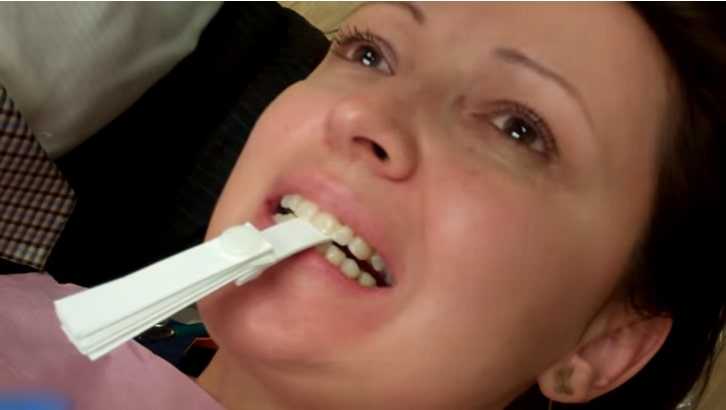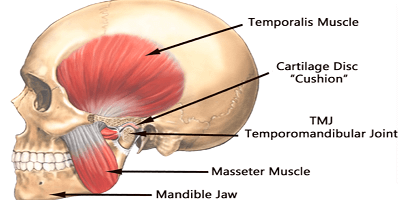Temporomandibular Joint Dysfunction (TMD)
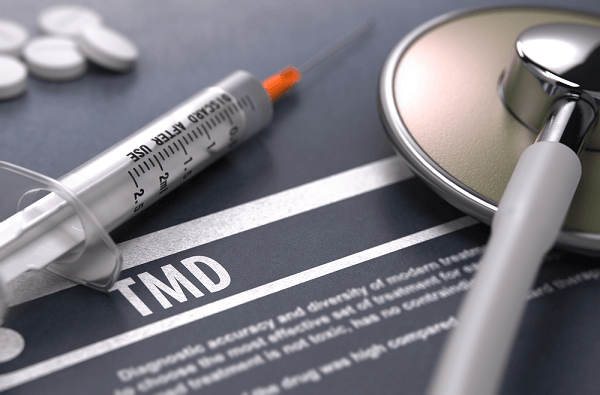
TMD is a pain syndrome involving the muscles and ligaments of the temperomandibular joint. TMD actually comprises a variety of different disease processes, ranging from true joint arthritis or inflammation, to muscle pain (myositis), which is the more common problem.Short term distress can result from several causes. By far the majority of cases are due to a sprain of the joint, similar to an ankle sprain…the muscles and ligaments get stressed and need to heal.

Pain comes most commonly from muscle tension or spasm, due to a combination of physical factors,(“loose” joint ligaments),emotional factors (stress), some physical injury, or to some degree, a “bad bite”. Usually acute onset TMJ is from injury to the delicate balance of the joint muscle functioning, either from opening too long or too wide, chewing something for a long time, muscle tension, or a blow to the chin. However, most often there is no discernable causative factor—-the jaw just seemd to “go out”, in the same way a back can “seize up”.
The Normal Joint
Your jaw joint is composed of a lower jaw bone, the mandible, which connects with your upper jaw, or maxilla, in a joint space that includes a pad of cartilage between the jaws. This pad is similar to the discs in your back or your knees, and acts to keep the two bones from rubbing on each other. This disc, or pad, is held in place by ligaments and a muscle, a portion of the external pterygoid muscle. The disk (pad) moves along with the lower jaw as you open widely. When you open just a little, it stays in place and the jaw simply rotates in place.
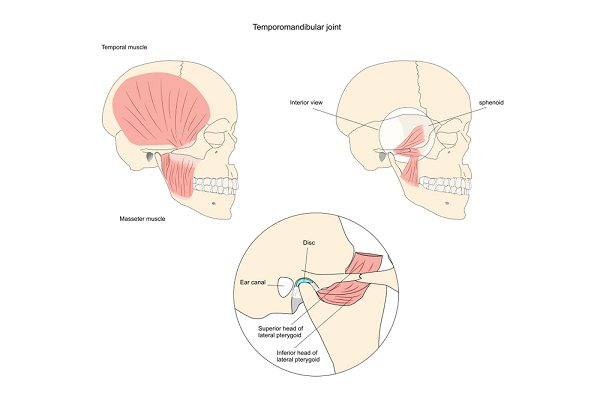
This joint is unusual, in that the mandible must accomodate not only to the ligaments and muscles, but also to how your teeth meet together. An additional complicating aspect is that this joint is bilateral, and the two sides have to work together. Trouble on one side can affect both sides. Usually the joint which is “out” is the one which hurts, but ocassionally the situation is such that the other joint is the one which hurts.
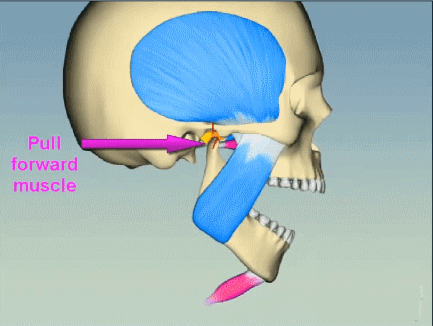
While this joint is delicate and has very complicated coordination with speech, swallowing, singing, opening for your dentist, and chewing, the associated muscles have to be capable of very strong forces, for chewing. Additionally, we all carry chronic muscle tension in our jaws; otherwise, we would walk around with our mouths hanging open, looking rather bizarre. This chronic muscle tension, to offset gravity, is similar to the back tension we all must assume to walk upright, and both are vulnerable targets for excess emotional tension. Most of us, at some point in our lives, will usually have some problems with both of these muscle areas.
Ideally, our joints operate quietly and smoothly but some of us will develop small pops or clicks as we chew or yawn. These are quite common, and should be discussed with your dentist to see if any treatment is needed. Usually these noises are a result of the jaw joint slipping onto, or off the articular disk. Often they will disappear with conservative menagement. If they do not go away, and are mild, often they can be lived with. Becoming overzealous with treatment in this situation can be harmful, costly, and time consuming. These management decisions you sould discuss with your dentist.


